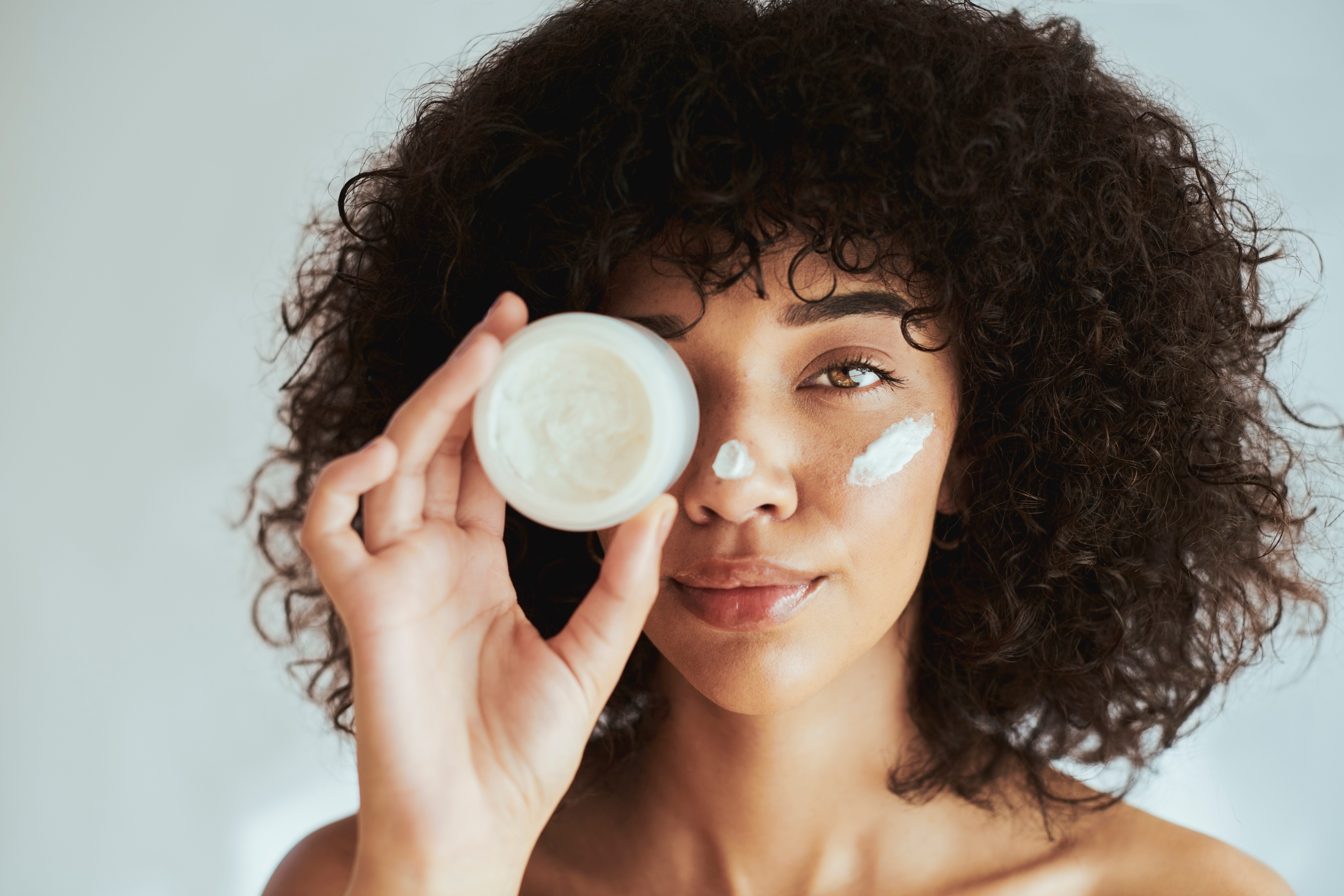For most of us, shea butter and cocoa butter are staples that we grew up using. Whether to avoid dry skin, improve hyperpigmentation (especially around those knees and elbows), or simply keep our skin soft, most of the diaspora consider these products bedrock staples of any good skincare routine.
Shea butter is sometimes seen as a more universal product since it can be used on hair and skin. But in general, both shea and cocoa butter have a reputation for keeping skin hydrated and smelling good. Plus, both are made from naturally derived ingredients that are usually free from harsh chemicals and fillers and are easily sourced both online and in-store.
Considering that both are so popular and go-to solutions for the community, is one better than the other for hair and skin?
The Basics on Shea Butter
Shea butter is derived from the African shea tree. The shea kernels from the fruit of the tree contain several fatty acids that are beneficial for hair and skin. Specifically it contains:
- Saturated oleic and static fatty acids
- Linoleic acid
- Arachidic acid
- Palmitic acid
Shea butter is also rich in vitamins E and A, two vital nutrients that the skin needs to maintain moisture and softness. People can buy it in either unrefined or refined forms. Unrefined is ideal for people that want pure shea butter that hasn’t been processed and is free from additives.
Also labeled as “raw,” unrefined shea butter can be used alone or as the base for DIY butter blends. However, raw shea butter that isn’t blended with anything can have a gritty texture which some people may find harder to work with. Still, shea butter has a generally pleasant scent that’s often described as nutty. However, if the smell is too strong, they can add essential oils to mask the nuttiness.
The Basics on Cocoa Butter
Cocoa butter is another naturally derived product, but it originates from Central and South America. The same beans that yield cocoa powder (yes, cocoa powder for chocolate production) are also responsible for cocoa butter. However, the portions that turn into chocolate are removed long before the remaining cocoa is processed into butter. Unsurprisingly, because this product is derived from the cocoa bean, it often smells a little like chocolate.
Cocoa butter is also rich in saturated fats but contains slightly different ones from those found in shea butter. This product contains:
- Oleic acid
- Palmitic acid
- Stearic acid
Shea Butter vs Cocoa Butter
Both shea and cocoa butter are excellent moisturizers, though they work slightly differently and have unique properties that set them apart. First, shea butter melts at room temperature while cocoa butter doesn’t. At room temperature, cocoa butter remains solid.
Generally speaking, both shea butter and cocoa butter are excellent choices for boosting moisture in the skin and keeping it hydrated. However, there are times when it makes sense to pick one over the other.
When To Use Shea Butter
Shea butter is rich in linoleic acid, a building block which the body does not naturally produce. Shea butter is ideal when applied topically and is particularly useful for repairing damaged skin thanks to the vitamins it contains. Specifically, it should be a go-to for people wanting to boost collagen production or slow collagen loss, to control irritation associated with atopic dermatitis, and to reduce redness or damage from sun exposure or sunburn—because sun damage does not discriminate.
Unlike cocoa butter, shea butter can be universally applied. This means people can use it for hair and skin, including their scalp. Whereas cocoa butter is usually sold as an already blended formula, shea butter is also sold raw. So individuals with skin sensitivities trying to avoid questionable filler ingredients are often encouraged to pick raw shea butter. People can blend raw shea butter with natural ingredients like organic aloe vera gel or other butters to make the texture smoother and to maintain a solid state at room temperature. Likewise, essential oils can be added to mask the natural nutty scent if it bothers them.
When To Use Cocoa Butter
If someone has a compromised skin barrier, cocoa butter is going to be the hero product. That’s because the palmitic acid, stearic acid and oleic acid components are very similar to the lipids and proteins naturally found in the skin. Additionally, cocoa butter contains a building block known as cocoa mass polyphenol (CMP) which is proven through research to prevent premature aging and damage to the skin.
Between the two butters, cocoa butter tends to be a little lighter, making it a better topical solution for someone that struggles with acne or clogged pores. Shea butter is a heavier butter, and even the American Academy of Dermatology cautions people with acne-prone skin from using shea butter.
Choosing Between Shea Butter and Cocoa Butter
Simply put, cocoa butter works best to maintain moisture and as a preventative measure against skin damage. Meanwhile, shea butter is good for moisture and healing damaged skin. However, both products are incredibly effective at providing the skin with critical natural nutrients, many of which are already found in the body. This factor aids in absorption and why the skin responds so well to both butters.
Still, people with acne-prone skin should be mindful that when shea butter and cocoa butter are emulsified, their oil form can be comedogenic and potentially encourage more acne or breakouts. This means both oils have the potential to clog pores and might not be the best option for use on the face.
Ultimately, most people will experience similar benefits between both butters even if a person uses cocoa butter as an after-sun or atopic dermatitis treatment. Likewise, DIY fans might prefer raw shea butter simply because it allows them to create customized solutions uniquely catered to specific skin concerns. But personal experiences and preferences such as ease of use, the scent, or even price will have the biggest influence on which option a person chooses.
